When I first decided to become a photographer, I didn’t realize the implications that came with it. That I was an artist. That I had vision. That I had a voice. I always thought that success meant making a living doing what I loved and leaving it at that.
But recently, I’ve realized I wanted so much more than that. I want to excel in my art. I want to make an impact in my community, country, and the world. I want to fight for my beliefs and charge forward in the face of adversity.
In this day and age, as much progress as we’ve made, women of color still have a long road ahead. This is why I decided to put together this list of Asian creative women to inspire us to rip away the impostor syndrome and to let our inner badasses flourish.
1. Anna May Wong
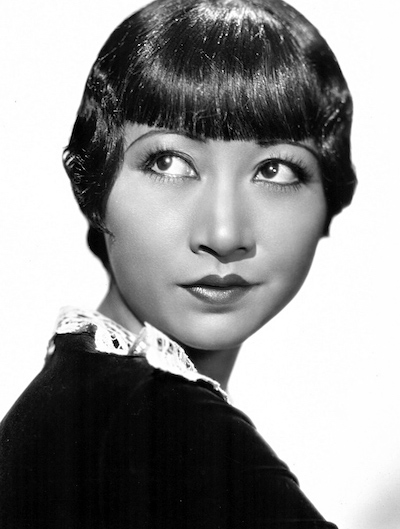
If you haven’t watched Ryan Murphy’s latest show, Hollywood on Netflix yet, you probably wouldn’t have recognized this name immediately. But without her, we probably wouldn’t have names like Lucy Liu, Awkwafina, Sandra Oh, and Scarlett Johanssen. Just kidding! Not Scarjo. But yes you guessed it! Before all those famous names, there was Anna May Wong; the first Asian American hollywood actress and movie star. Anna May’s story isn’t unlike what we’ve expected from Hollywood over the years.
Born in Los Angeles, Anna May knew she wanted to be an actress, even at the young age of 9 years old. Despite the movie industry being predominantly white, Anna would sneak out to attend casting calls for movies that required extras of Asian descent. Over time, her hard work eventually paid off, and by the time she was 17, she starred as a romantic lead in one of the first technicolor films of its time, The Toll of the Sea (1922). American audiences were instantly captivated by her beauty and charisma onscreen and not long after, she started to become increasingly famous in Hollywood. Even despite her groundbreaking success, over time, Anna May realized that she kept getting offered the same stereotypical Asian roles. She was often relegated to play the “dragon lady”, demure “butterfly”, or an exotic temptress in B-list movies, and forced to speak in ethnic Asian accents, despite being a third-generation Chinese-American.
But perhaps notably, the toughest loss of her career, was when she was passed over for the lead role in The Good Earth, a film about struggling Chinese farmers, to German-American actress Luise Rainer. Sound familiar? Yeah. As the only Chinese actor amongst a cast of American actors in a film about Chinese villagers, Anna May was instead asked to audition for the role of the concubine, Lotus, to which she replied,
“I’ll be glad to take the test, but I won’t play the part. If you let me play O-lan, I’ll be very glad. But you’re asking me—with Chinese blood—to do the only unsympathetic role in the picture, featuring an all-American cast portraying Chinese characters.” – Anna May Wong via The Los Angeles Times
At one point, Anna May also decided to create her own production company, Anna May Wong Productions so that she could make films about her own culture. But because her partner was engaging in dishonest business practices, she ended up dissolving the company. Even though Anna May didn’t get the Hollywood ending she deserved, she definitely proves that she was no demure “butterfly.” She fought to be cast in roles that were deserving of her talent and accurately represented her culture, rather than cower and stick with the status quo. It was her tenacity, talent, and rapid ascent to stardom that ultimately opened doors for future generations of Asian actresses, helping to create strides in the film industry we know today. Which brings me to my next gal.
2. Amy Tan
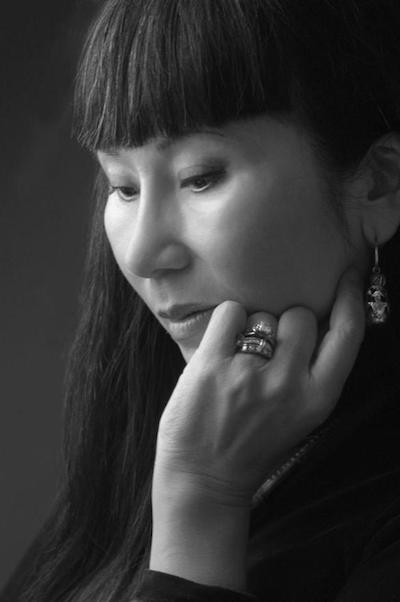
Before Kevin Kwan’s New York Times bestseller, Crazy Rich Asians (2018) smashed box office records, many forget it was actually The Joy Luck Club (1993), a film adapted by Amy Tan’s novel of the same name, that revolutionized the film industry as the first feature film with an all-Asian cast. The Joy Luck Club, although a work of fiction, can often be interpreted as a reflection of Tan’s own Chinese-American experience, real-life tragedies, and complex relationship with her mother.
Born in Oakland in 1952 to mother Daisy Tan and father John Tan, Amy was a first-generation American-born Chinese who like many ABC’s, struggled with racial discrimination and assimilation to life in America. Also similar to Jing-Mei Woo, the main protagonist in The Joy Luck Club, it wasn’t until Amy was in her teens before she learned that she had 3 half-sisters in China. Over time, Amy eventually discovered more about her family history, including the fact that her grandmother was raped as a young woman and had committed suicide by consuming raw opium. Or that her mother’s first marriage was to an abusive man, whom she blames for the death of 2 of her 5 children. Tan’s mother eventually fleed China in 1949 to America, during the beginning of the communist revolution.
Throughout her life, Amy experienced many personal tragedies; the death of her father and brother, the murder of her college roommate, molested by a community leader, multiple property break-ins, and at one point, held up at gunpoint. She has been criticized, threatened, stalked, and assaulted. Yet, through it all, she has hardened herself in impenetrable armor, indestructible like an iron bull. In her own words,
“I think, is this forewarning, or is that superstitious neurosis? Then I think, thank God I’m a writer: you can play with notions of fear and mortality. It’s made me very strong; I’m resilient, I have survivor skills. Some of that is superficial – what I present to people outwardly – but what makes people resilient is the ability to find humor and irony in situations that would otherwise overpower you.” – Amy Tan via The Guardian
Thankfully, today Amy is living in much happier times. She currently lives in Presidio Heights in San Francisco with her husband Louis DeMattei, and their two Yorkies. She occasionally dabbles in art, works out like a beast (at 68 years old no less!), and continues to be a prominent voice in the Asian-American community. What makes Amy so special is not just her god-given talent as a writer, but her ability to harness her trauma and childhood memories to create an experience that every first-born Asian American can relate to: a silent chasm between parent and child, immigrant and American, becoming empathetic to each other’s experience and forgiving each other. Amy’s stories can be tough at times to read. She could have easily written about Chinese culture and all the wonderful aspects of it; something easily digestible to the masses. But she didn’t. She spoke her truths and she didn’t apologize for it. Amy’s prolific contributions to Chinese-American literature helped pave the way for numerous contemporary Asian-American women authors such as Celeste Ng, Jenny Han, and Helen Hoang, allowing for a new generation of stories to be told.
3. Maya Lin
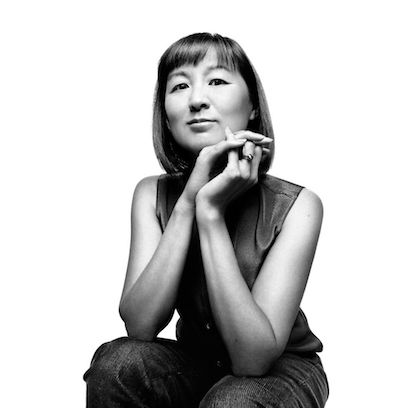
The last gal on our list is someone I had recently discovered. If you have visited the Vietnam War memorial in Washington DC, you might know that the artist behind the design, is none other than the formidable visionary, Maya Lin.
The Vietnam War was a war steeped in controversy, bloodshed, and political strife; a watershed moment in time that divided a nation, forever changing the fabric of American history for years to come. In 1979, 4 years after the Fall of Saigon, Jan Scruggs, a former Vietnam veteran, began a personal crusade to establish a memorial in order to honor fallen veterans of the Vietnam War, and succeeded. By 1980, Congress approved a bill to authorize 3 acres on the national mall to serve as the memorial site. Congress then announced an open competition to design the memorial site for a prize of $20,000. By March 1981, in a blind submission (designs submitted were designated by number rather than names) nearly 1,500 entries were submitted, but one was chosen unanimously by a committee of 8 jurors: entry 1026 by Maya Lin.
21-year old undergraduate Maya Lin from Athens, Ohio, a Chinese American woman, had beat out hundreds of applicants to design an enduring immortal structure in the nation’s capitol. Maya’s design stood out right from the get-go. It broke free from traditional elements of memorial design; instead of a vertical towering Egyptian or Roman-inspired design, she sketched a horizontal v-shaped wall with each wall facing either sides of the national mall. Instead of the standard limestone or marble construct, she opted to use black granite with a polished finish, a choice many deemed too dark and ominous for a memorial when it should be inspirational and patriotic. According to Lin, her idea for the design came when she imagined, “taking a knife and cutting into the earth, opening it up, and with the passage of time, that initial violence and pain would heal.” Yes, dark indeed.
What ensued afterwards was a public outcry denouncing the Vietnam memorial design as a “black gash of shame” or a “degrading ditch.” At one point, Maya stated that, had her gender and ethnicity been revealed at the time of the competition, she certainly wouldn’t have been chosen, an argument supported by the fact that 3rd-party presidential candidate Ross Perot called her an “eggroll.” Eventually, the backlash got so severe that at one point, committee members proposed that a second design be added to the memorial site, a bronze statue of 3 soldiers, designed by 3rd place winner, Frederick Hart. Instead of bucking to the pressure of the public outcry, Maya Lin fiercely objected to the inclusion of Hart’s design, stating that “it violated the integrity of her design” and created the sensation of “being watched.” In the end, Lin’s objection was overruled and Hart’s figurative sculpture ended up being erected adjacent to the memorial.
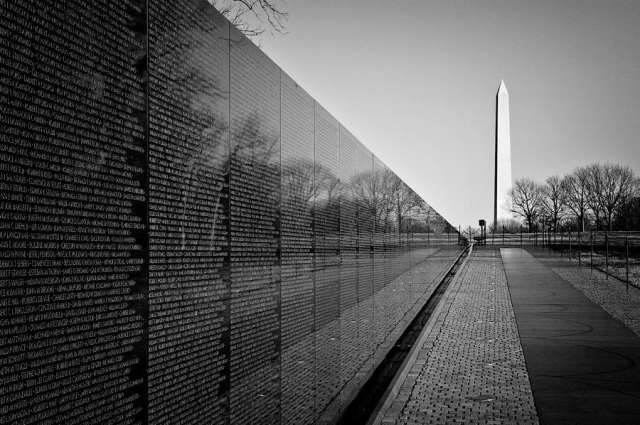
Today, the Vietnam Memorial Wall stands 10 ft tall, with two 246 ft x 9 inch black granite walls, etched with the names of roughly 58,320 fallen men and women. What was once initially shrouded in controversy is now recognized as one of the most significant modern architectural designs of the 20th century. The Vietnam War memorial receives around 3 million visitors annually and changed the way people grieved. It is what many people were led to believe to have created the first shared mourning experience by allowing visitors to leave personal artifacts from photos to flowers from family members. Also, Maya’s once widely panned use of polished black granite is now seen in other Vietnam memorials all over the country, from Portland, Oregon all the way to Pensacola, Florida. From the beginning, Maya was brave enough to swim against the current. She dared to create something new and she voraciously stood up for herself against a wave of criticism. Today, Maya continues to design other notable works that are now housed in museums all over the US, including De Young in San Francisco, as well as be a champion for environmental and social issues through her art. As Maya wisely states,
“To fly we must have resistance.” – Maya Lin
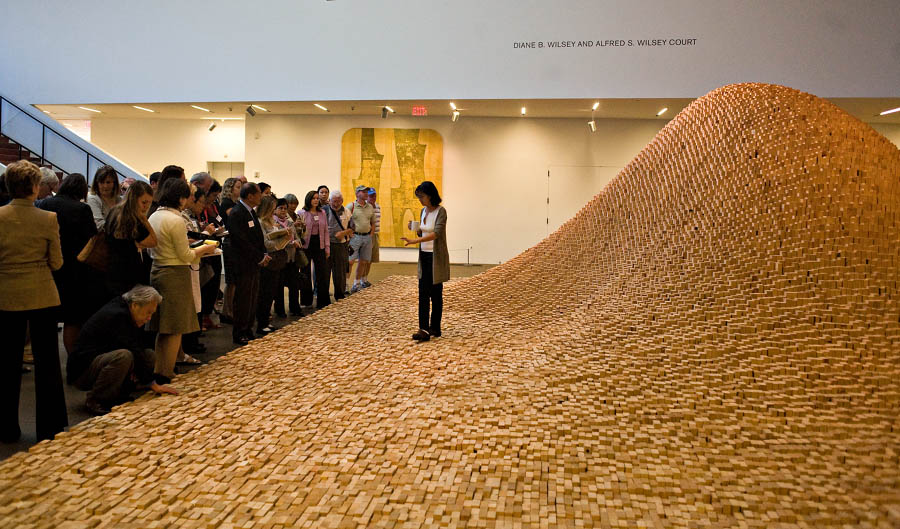
Anna May Wong, Amy Tan, and Maya Lin broke barriers in creative industries at a time when they were predominantly white and male. The odds were stacked against them from the beginning, but it could do nothing to extinguish their flame. Despite the many moments of adversity they experienced during their lifetime, it was ultimately their bravery, courage of conviction, and perseverance that allowed them to become the legends that they are, and pave the way for generations to come. Thank you to these Asian creative women for being eternal role models!
x
{Next_post_link} | Next Post >
< Prev post | « We’re almost halfway through 2020 and wow, I have thoughts.